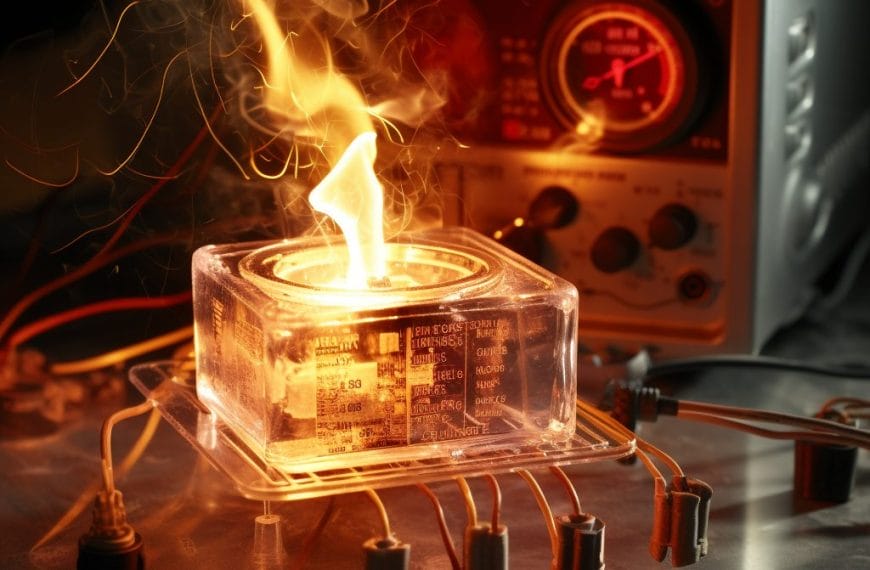Have you ever slipped on a pair of headphones on a roaring airplane or in a bustling cafe and felt the world just… fade away? It’s a moment of pure bliss, a personal bubble of quiet in a loud world. But it’s not magic—it’s fascinating science. This article will explain exactly how noise-cancelling headphones work, breaking down the clever technology that makes silence possible.
Silence, Explained in a Sentence
Noise-cancelling headphones create an “anti-noise” sound wave that is the exact opposite of the ambient sound around you; when these two waves meet, they cancel each other out, resulting in silence.

The Core Technology – Active Noise Control (ANC)
The star of the show is a technology called Active Noise Cancellation, or ANC. Think of it as fighting fire with fire, or in this case, fighting sound with more sound. It’s a precise, high-speed process that relies on a few key components working in perfect harmony.
How a Sound Wave Becomes Silence
Imagine a perfectly still pond. If you drop a pebble in, you create ripples, or waves. Now, what if you could create a perfectly opposite set of waves? Where the original wave has a crest, the new one would have a trough. When they meet, they flatten each other out, and the water becomes still again. This is the core principle behind how noise-cancelling headphones work and it’s called destructive interference.
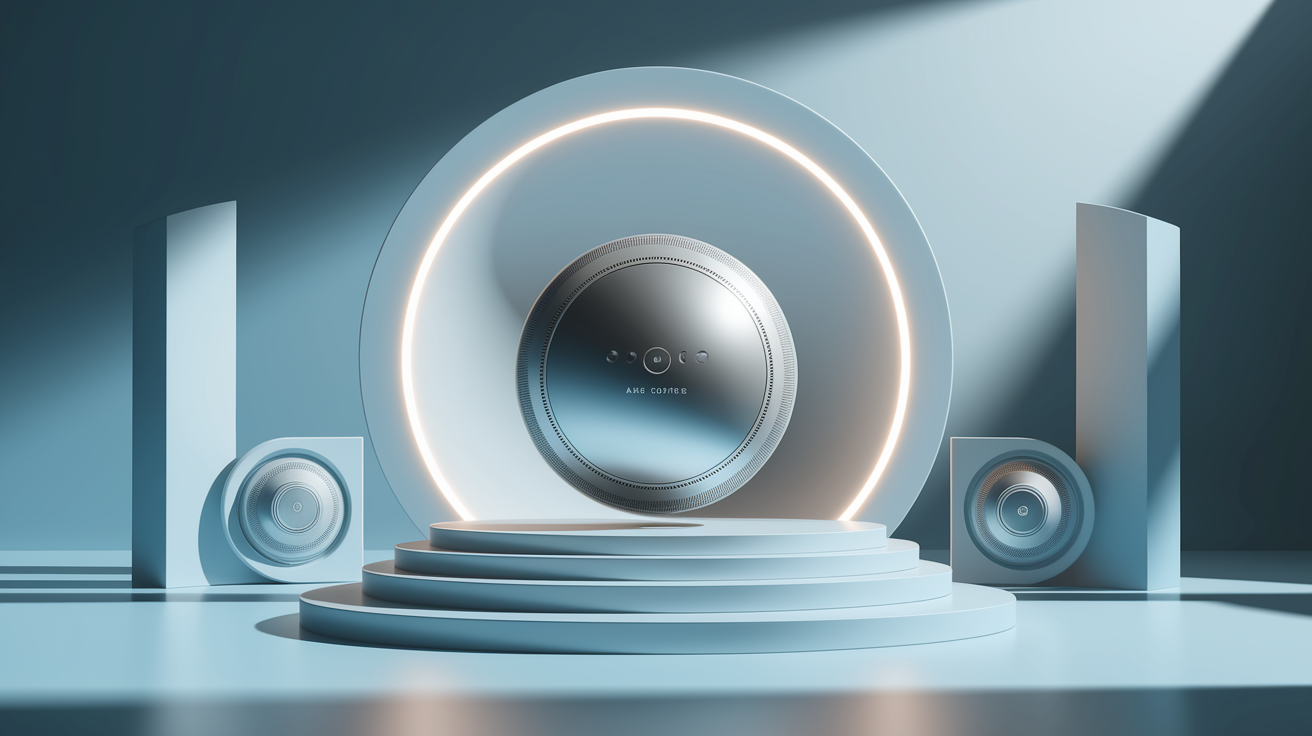
Here’s how the hardware pulls it off:
- Microphones Listen: Tiny microphones, often both on the outside (feedforward) and inside (feedback) of the headphone earcup, act as ears. They constantly listen to the ambient sound around you—the low hum of an engine, the drone of an air conditioner.
- A Processor Thinks: The captured sound is sent to a tiny but powerful computer chip called a Digital Signal Processor (DSP). This chip analyzes the sound wave in real-time. The speed at which this happens is critical, relying on electrical signals moving through the headphone’s internal circuitry at incredible speeds. In a fraction of a millisecond, as detailed by audio experts at Sonos, the DSP creates a perfect, inverted copy of the noise—the anti-noise.
- A Speaker Acts: The headphone’s main speaker (the audio driver) then plays this newly created anti-noise sound. This signal has the same amplitude but the opposite phase (a process called phase inversion) as the original background noise.
- Waves Collide: When the incoming noise wave from the outside world meets the anti-noise wave generated by your headphones, they cancel each other out before the sound reaches your eardrum. You hear… nothing. Or, at least, much less of that distracting hum.
You can absolutely use noise-cancelling headphones without playing any music. The ANC system works independently from the audio signal, making it a great tool just for creating quiet, whether you’re trying to work, study, or simply relax.
Passive Noise Isolation – The Unsung Partner
Active Noise Cancellation doesn’t work alone. It has a crucial partner: Passive Noise Cancellation (PNC), also known as noise isolation. While ANC is an electronic trick, PNC is all about physical design. It’s basic soundproofing for your ears.
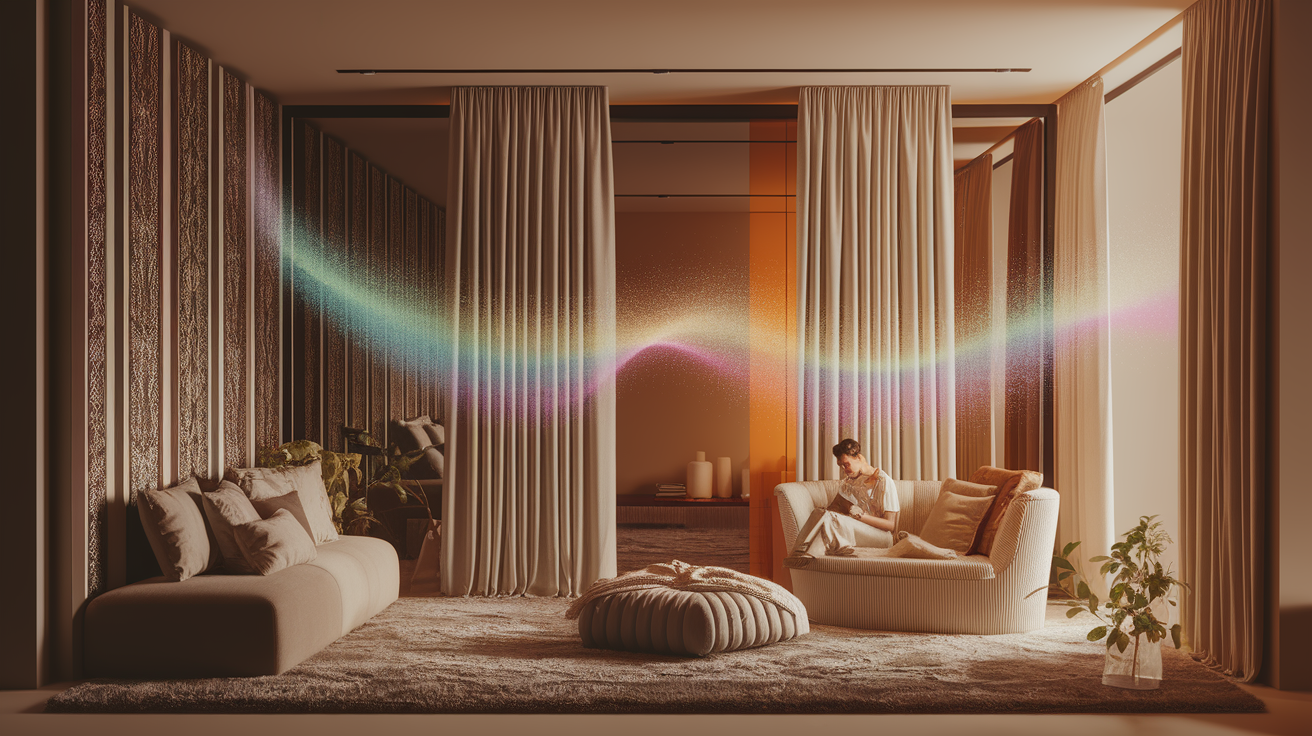
PNC works by simply blocking sound waves from ever reaching your ears in the first place. This is achieved through:
- The Earcup Seal: With over-ear headphones, the plush padding creates a tight seal around your ears.
- Snug Fit: For in-ear earbuds, the silicone or foam tips are designed to fill your ear canal, forming a physical barrier.
- Dense Materials: The materials used in the headphones themselves are chosen for their ability to block and absorb sound waves.
So, what is the difference between active and passive noise cancelling? Think of it this way: Passive Noise Cancellation physically blocks sound (like putting your hands over your ears), while Active Noise Cancellation electronically erases it. A great pair of noise-cancelling headphones from brands like Sony or Sennheiser excels at both.
When ANC Shines and When It Struggles
ANC technology is brilliant, but it’s not a magical “delete all sound” button. Its effectiveness depends on the type of noise it’s trying to cancel.
Where ANC Excels
ANC is a master at eliminating constant, low-frequency sounds. Its ability to predict the sound wave and create its opposite is what makes it so effective. This is why these headphones are a dream for:
- Cancelling out airplane noise
- Dulling the rumble of a train or bus
- Silencing the hum of an office air conditioner
Where ANC Has Limitations
Higher-frequency and sudden, irregular sounds are much harder for ANC to handle. Their sound waves are shorter and less predictable, making it difficult for the DSP to generate a perfect anti-noise wave in time. This means noise-cancelling headphones are less effective at blocking:
- Human Speech: While they can muffle voices, they typically don’t block them out completely. You will likely still hear if someone is talking to you.
- Sudden Noises: A dog bark, a car horn, or a plate smashing are too quick and sporadic for the ANC to react effectively.
- High-Pitched Sounds: A shrill whistle or a siren.
In these cases, the physical barrier of Passive Noise Cancellation does most of the heavy lifting.
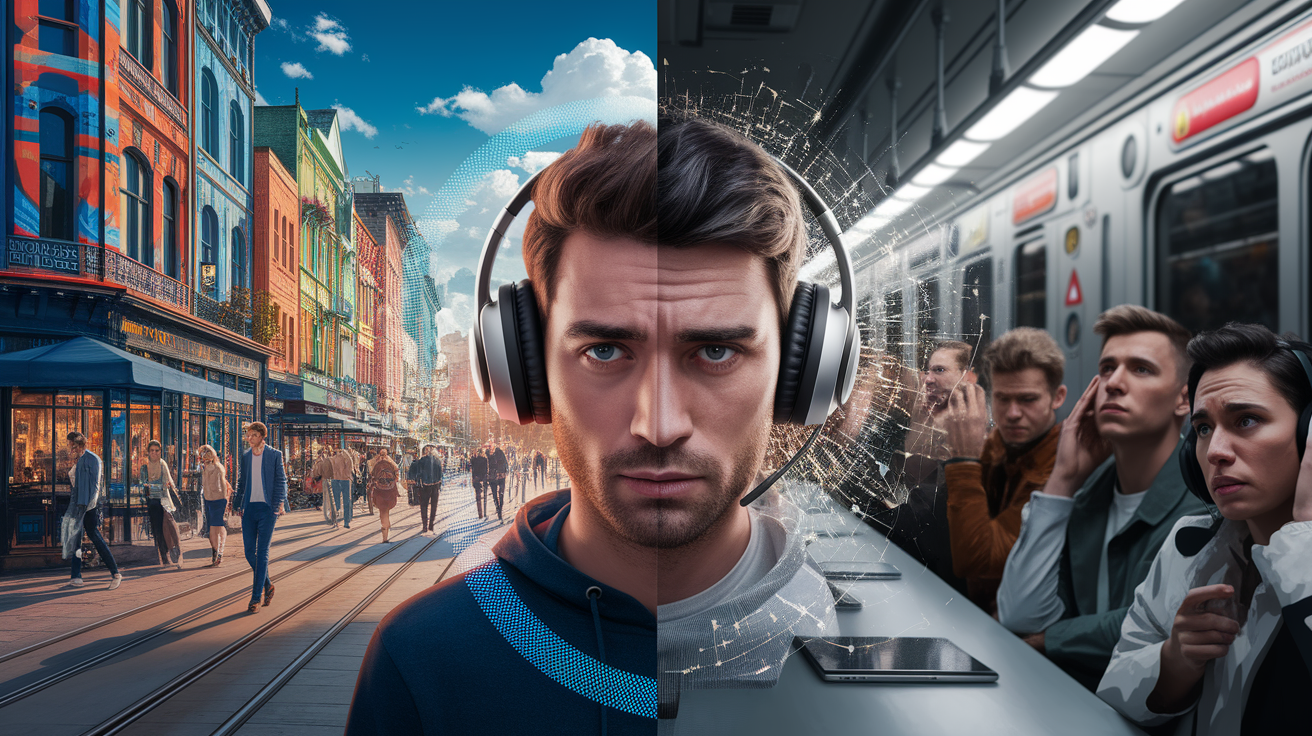
A Note on Pressure, Vertigo, and Ear Safety
Some users report a feeling of pressure when using ANC headphones, sometimes called “headphone pressure.” This sensation doesn’t come from a physical change in air pressure. Instead, your brain is so used to hearing low-frequency ambient sounds that when they suddenly vanish, it can interpret the absence of sound as a pressure change. For most people, this feeling goes away with use. In rare cases, this can contribute to a sensation of dizziness or vertigo.
As for safety, are noise-cancelling headphones bad for your ears? Quite the opposite. By blocking out background noise, they allow you to listen to your music or podcasts at a much lower, safer volume, which helps protect your hearing in the long run.
The Evolution of Quieter Listening
The idea for this amazing technology began, fittingly, on a noisy flight. According to Wonderopolis, in the late 1970s, Dr. Amar Bose was on a plane trying to enjoy the airline’s new electronic headphones, but the cabin noise was overwhelming. He spent the flight sketching out the basic physics for what would become Active Noise Cancellation.
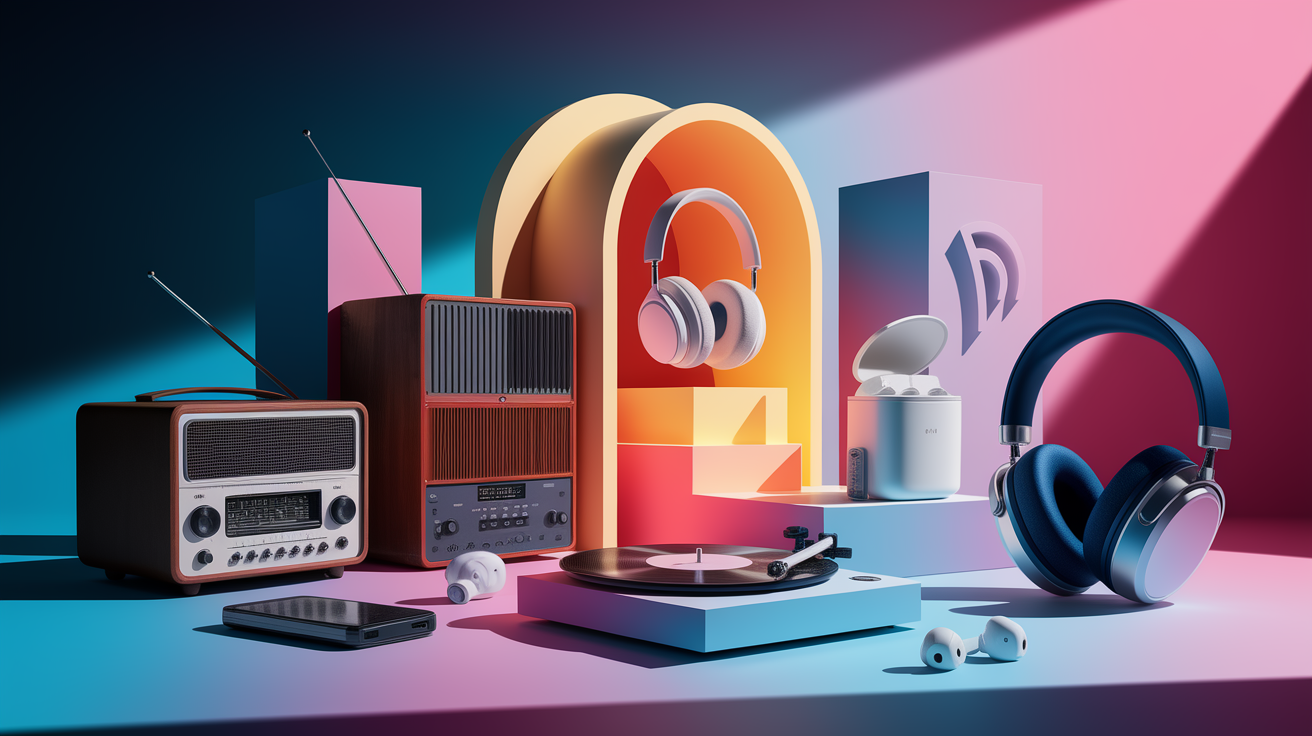
It took nearly a decade of research, but the Bose Corporation eventually introduced the first commercial noise-cancelling headset, designed primarily for pilots in aviation to protect their hearing and improve communication. For years, the technology was a high-priced, niche product for professionals. Today, thanks to advances in miniaturization and processing power, this powerful audio technology is available to everyone, from the daily commuter to the student looking for a quiet study aid, packed into everything from large over-ear cans to tiny wireless earbuds.
Wrapping It Up – Your Personal Bubble of Quiet
The science behind noise-cancelling headphones is a beautiful dance between physics and engineering. By actively listening to the world and creating a perfect auditory counter-attack, these devices give us the power to control our sound environment. They combine the brute force of physical soundproofing with the elegant precision of destructive interference to carve out pockets of peace, turning a noisy commute into a private concert hall and a loud office into a focused workspace.








